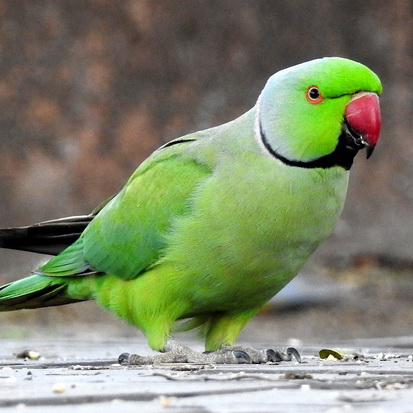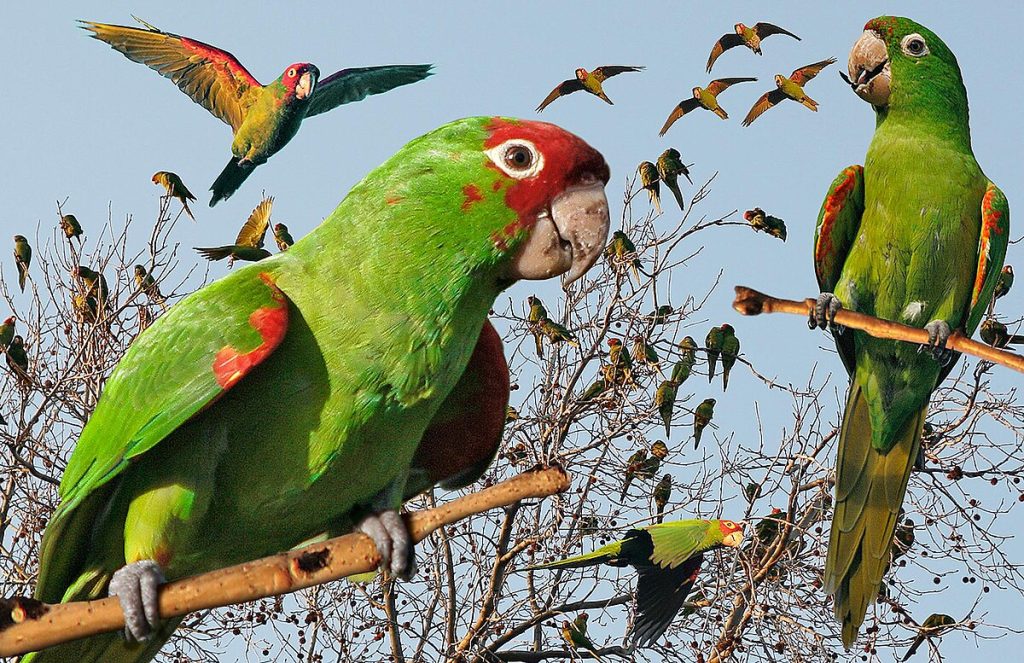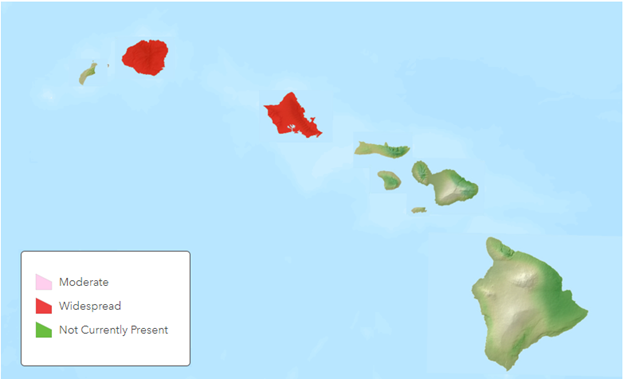Rose-Ringed Parakeet – RRPA
Rose-Ringed Parakeet (Psittacula krameri) – RRPA
Regulatory Status: Hawaii Injurious Wildlife (HAR 124). Federal Injurious Wildlife. It is prohibited to release Injurious Species into the wild; transport them to islands or locations within the State where they are not already established; and export from the State, with importation restricted by the Hawaii State Department of Agriculture.
Prevention and Control Category: Importation Restricted by the Hawaii State Department of Agriculture. All wild birds – including introduced species – are protected under Hawaii Revised Statutes (HRS183D and HAR124); therefore, a nuisance wildlife control permit is necessary to take RRPA in the Hawaiian islands. All state and local regulations for firearm discharge must be followed.

Photo credit: Dr. Raju Kasambe
DESCRIPTION:
-
Medium to large parakeet (110-182g weight, 38-42 cm length with a 40 cm wingspan and a long tail (up to 25 cm) approximately the same length as its body.
-
Mature males have a dark pink or reddish to black neck-ring, a black lower mandible, and longer tails than females. Juvenile males do not have the diagnostic neck-ring and look similar to females.
-
Native to the Indian subcontinent and central sub-Saharan Africa, brought to Hawaii as pets, possibly escaped, but may have been illegally released in the 1980’s to 90’s.
IMPACTS:
-
Can cause significant damage to agriculture, including grains, oil seeds, fruits, ornamental and native plants.
-
Spreads the seeds of invasive plants, including miconia, ivy gourd – among others.
- On Kaua’i, it has been estimated that RRP have caused an average of 10% in losses for small farms.
-
Aggressively chases other birds and competes with them for food and space. There is anecdotal evidence that they compete with native birds, such as Manu o Ku (Gygis alba) where they co-exist. They have the potential to spread avian diseases.
- Large flocks of RRPA roost near human infrastructure resulting in concerns about human health and safety (e.g., collisions with aircraft, disease transmission, feces accumulation, noise complaints, and property damage).
DISTRIBUTION:
-
Oʻahu & Kauaʻi: Populations have exponentially increased to the point that eradication is not possible.
-
Maui: Not known to be present. All sightings should be reported to MISC or DOFAW.
-
Big Island: Not known to be present. All sightings should be reported to BIISC or HDOA.
LOOK-ALIKE SPECIES:
- The red masked parakeet is a look-alike bird, it is sometimes confused for rose ring parakeet.
- “The red-masked parakeet is a released cage bird first observed on the Big Island in 1988. These nomadic loud social birds forage along the Kona coast but roost and breed in pit craters at high elevations on Hualālai mountain. They now number in the hundreds and can be a pest to coffee farmers.” (DLNR)

Red Masked Parakeet
Photo credit: Richard Crossley
